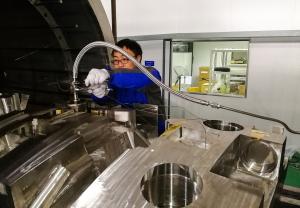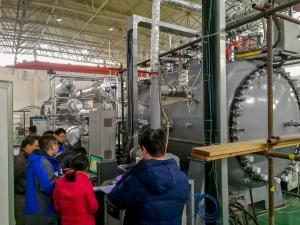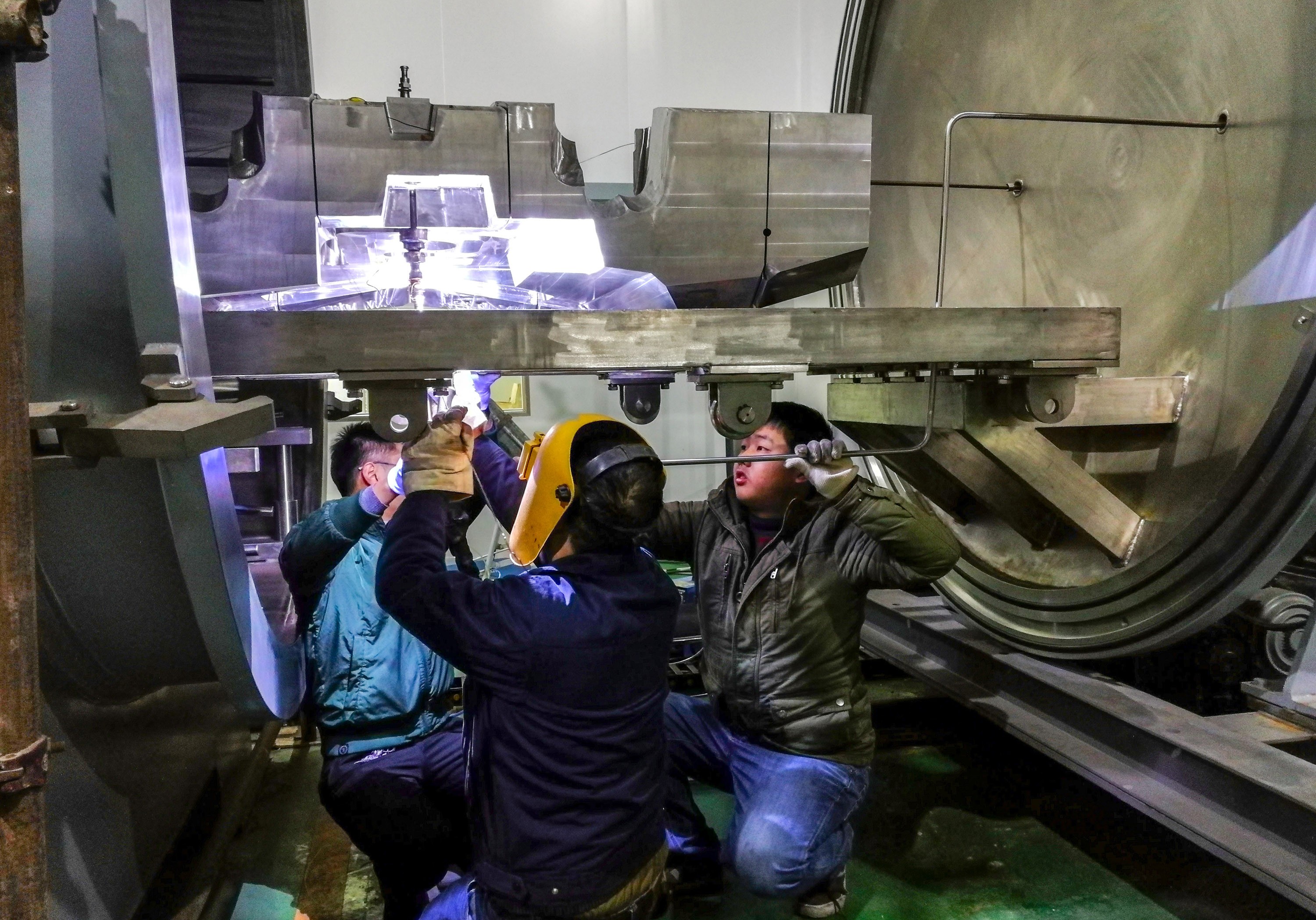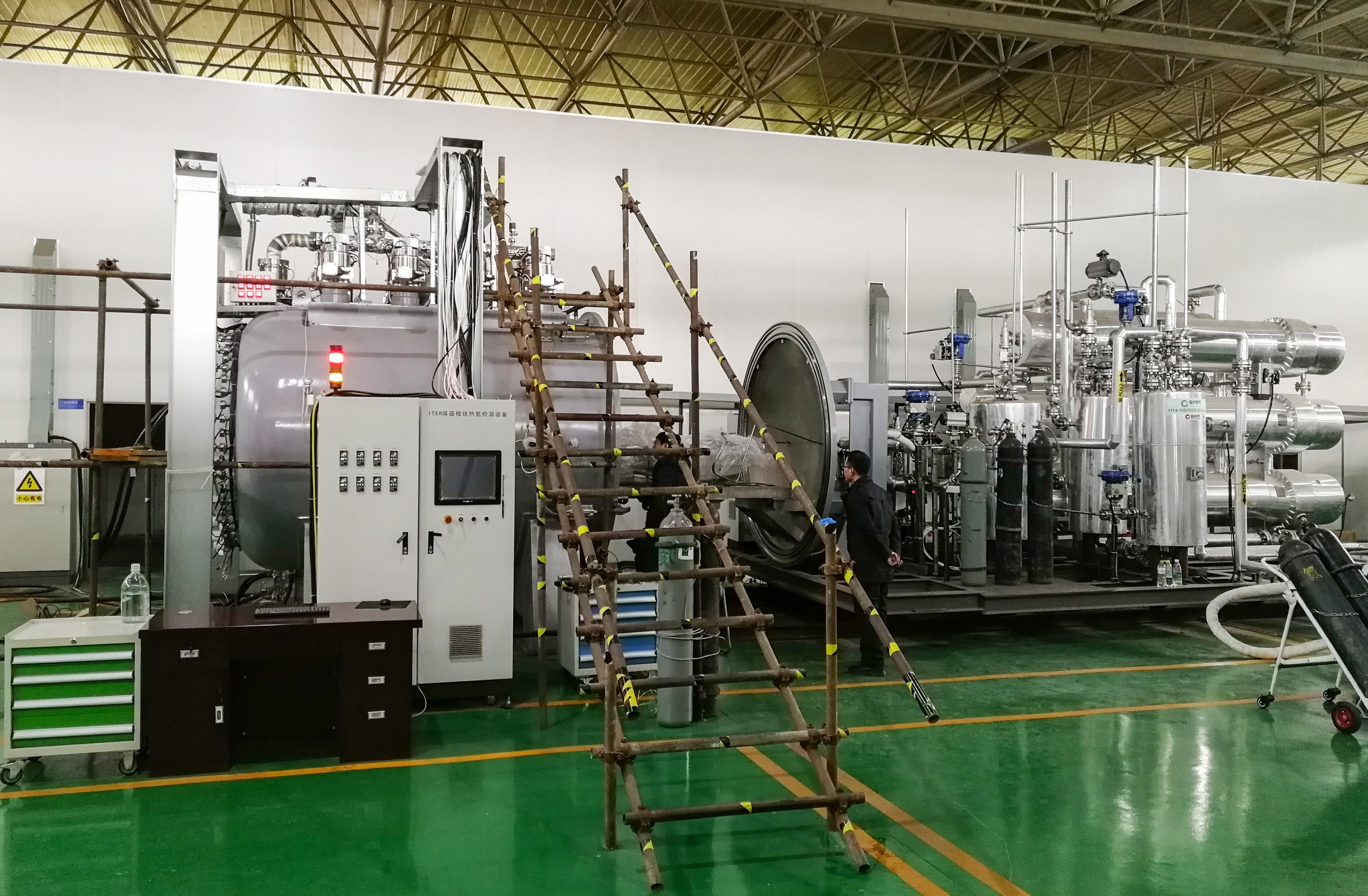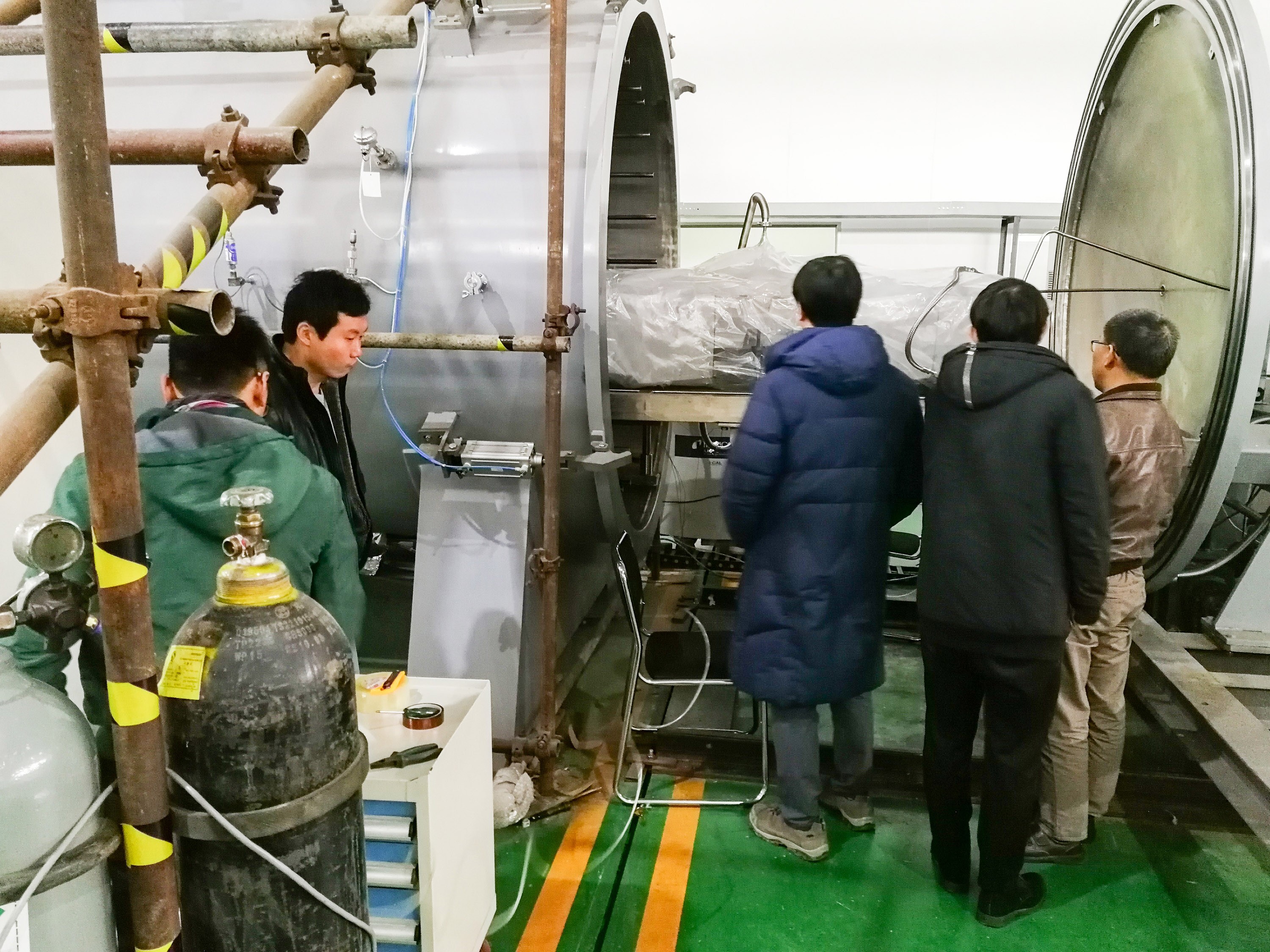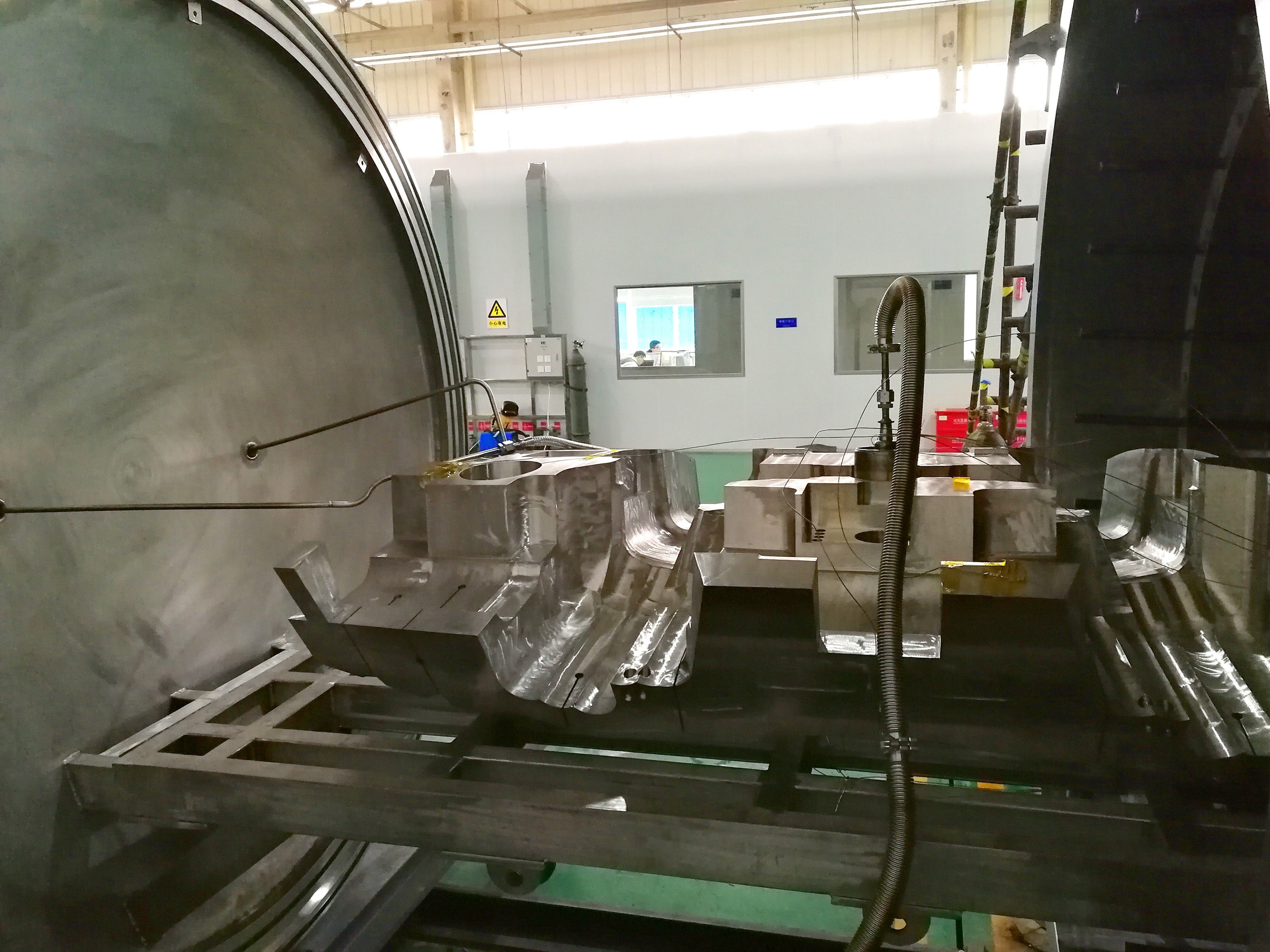Chinese manufacturers started on the full-scale prototype in July 2016, progressively accomplishing all of the fabrication steps including machining datum, drilling the deep holes of the cooling channel, side machining, welding of cover plates, and final machining. From nine tonnes of original stainless steel forgings, the final full-scale prototype after machining was 2.8 tonnes. Many tests were performed throughout the fabrication process to verify quality—such as preliminary dimensional examination, non-destructive examination, and hydraulic pressure tests, which all showed acceptable manufacturing results.
The shield blocks, like all the in-vessel components, have to operate under ultra-high vacuum conditions (ten billion times lower than atmospheric pressure). Therefore stringent design, manufacturing and testing provisions have to be planned in order to ensure that the demanding vacuum requirements are met. In this regard, the so-called hot helium leak test represents the definitive demonstration of the fitness for purpose of the component to operate in an ultra-high vacuum environment. This test foresees the cycling of the components up to the operational temperature and pressure in order to be able to detect the tiniest microleaks, which would not be detectable by other means.
During commissioning tests at the dedicated hot helium leak test facility in Chengdu, operators verified that the sensitivity of the helium detector and the background helium leak rate could reach ITER requirements; in both cases the facility performed well.
During two full cycles of testing on the full-scale prototype, results showed that the maximum helium leakage rate was well within ITER requirements. As the first hot helium leak test on a large ITER blanket component, the results provide valuable reference data for the further investigation of the acceptance criteria of ITER blanket components. They also provide an important benchmark for developing hot helium leak test standards for the large vacuum components of future tokamaks.
See the gallery of photos below.

